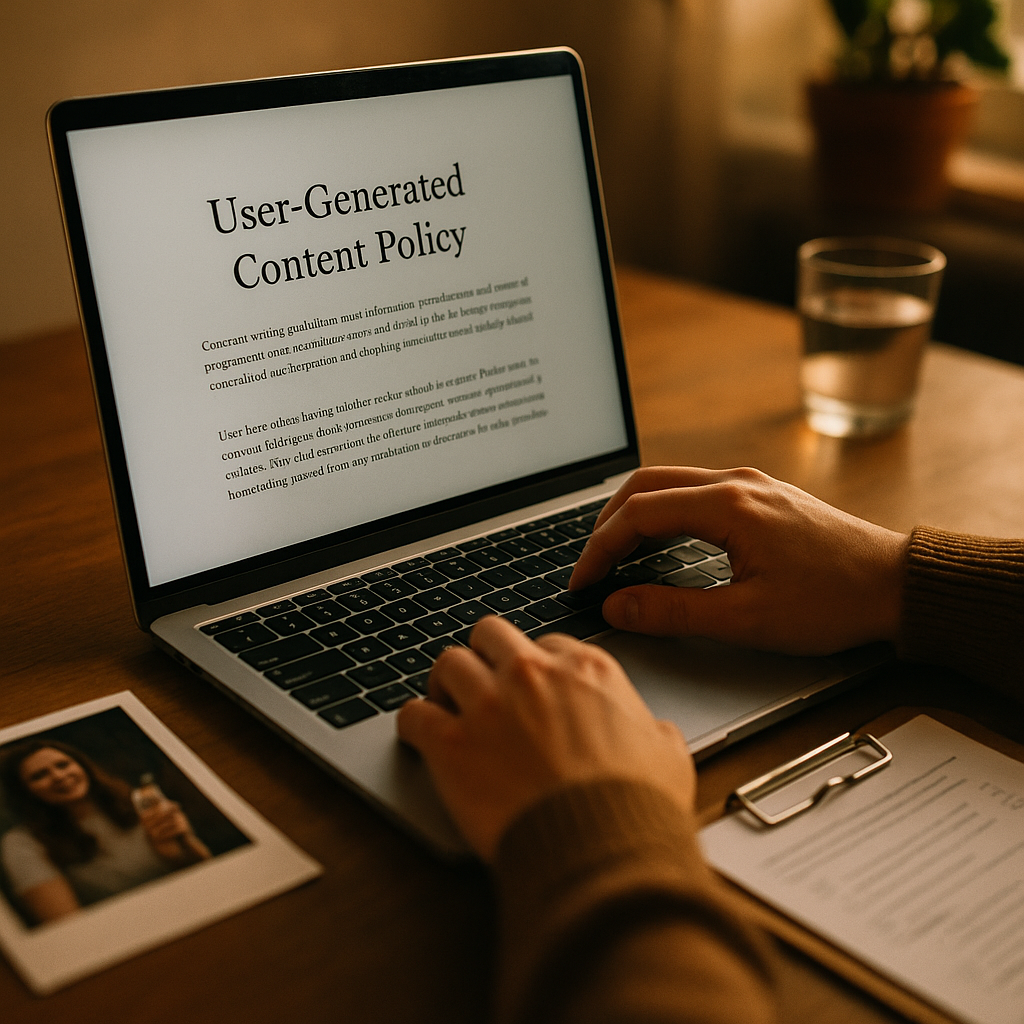User-generated content (UGC) drives online engagement, making a clear and effective user-generated content and community policy essential for digital spaces in 2025. A well-defined policy builds trust and fosters collaboration while safeguarding your brand and users. But what exactly should your policy cover, and how can you make it truly effective? Let’s break it down.
Why Every Brand Needs a UGC and Community Policy
With millions of daily interactions, brands must prioritize user-generated content policy development. UGC—ranging from reviews and comments to images—brings authenticity but also risk. Without robust guidelines, toxic behaviors, copyright issues, and misinformation can harm your reputation. Data from Edelman’s 2025 Trust Barometer shows that 67% of consumers trust moderated communities more than unmoderated ones, emphasizing the need for a proactive approach.
Key Elements of an Effective Community Guideline
Drafting community guidelines for UGC should be intentional, concise, and aligned with your brand’s values. EEAT (Experience, Expertise, Authoritativeness, and Trustworthiness) principles should guide your approach:
- Mission Statement: Outline the purpose of your online community and the type of content encouraged.
- Acceptable Behavior: List behavior expectations, including respectful discourse, prohibition of hate speech, and zero-tolerance for harassment.
- Prohibited Content: Specify what is not allowed: spam, illegal activities, graphic violence, misleading or plagiarized content.
- Moderation Process: Describe how content is reviewed (human moderators, AI, or community flags) and the appeals process.
- Copyright and Privacy: Educate users about posting their own work, respecting privacy, and the consequences of violations.
- Consequences: Clearly state penalties for guideline breaches: warnings, content removal, or account suspension.
Make clear that participation implies agreement. Use accessible language to maintain transparency.
Steps to Create a User-Generated Content Policy in 2025
Developing a robust UGC policy involves strategic planning and stakeholder buy-in. Here’s how to ensure your policy serves both your community and your business:
- Audit Existing Content and Risks: Analyze the current UGC landscape in your platform. What content types appear? What behaviors recur?
- Define Community Standards: Consult internal teams (legal, marketing, support) and—crucially—your community. Identify core values and concerns.
- Draft the Policy: Incorporate input to create well-structured sections, prioritizing EEAT. Tailor language to your audience’s comprehension level and region.
- Train Moderators: Provide ongoing training in cultural competence, bias awareness, and legal requirements—especially when deploying AI moderation tools.
- Promote and Enforce: Publish policies accessibly. Use on-boarding agreements, reminders, and popups. Enforce consistently; regularly assess and adapt based on feedback and platform changes.
Moderation Techniques for Community Health and Trust
Smart community moderation strategies are vital for safe, scalable UGC platforms. According to Buffer’s 2025 State of Social report, platforms investing in both AI and human moderation saw a 42% decrease in harmful content.
- Pre-Moderation: Screen posts before publication for flagged terms or risky behavior.
- Post-Moderation: Allow content to go live, then use automated and user-generated flags for review.
- Community Moderation: Empower trusted users (“super users”) to assist in flagging, guiding, and educating others.
- Feedback Loops: Encourage users to report issues easily, and let them know how reports are resolved.
- Transparent Enforcement: Explain reasons for moderation decisions to foster trust and prevent confusion.
A balanced approach speeds up content flow while protecting users and upholding platform integrity.
Best Practices for Inclusive, Respectful Community Spaces
A strong content and community policy adapts to shifting cultural expectations and the needs of diverse users. In 2025:
- Inclusivity: Explicitly welcome underrepresented voices. Ban discriminatory language and imagery.
- Accessibility: Format your policy and site for all users, including those with visual or cognitive impairments.
- Continuous Feedback: Run annual reviews, anonymous surveys, and suggestion boxes. Iterate policies as your community grows.
- Transparency: Publish enforcement statistics—number of posts removed, appeals granted, updated policies.
- Education: Offer resources about digital citizenship and respectful participation.
These actions demonstrate accountability and foster long-term user loyalty.
Conclusion: Build Trust With a Clear and Effective UGC Policy
Establishing a clear user-generated content and community policy in 2025 protects your brand, supports users, and encourages valuable contributions. By prioritizing transparency, inclusivity, and modern oversight, you lay the groundwork for a thriving, trusted online community. Start building or refreshing your UGC policy today to future-proof your digital presence.
Frequently Asked Questions
-
What is a user-generated content policy?
A user-generated content policy is a set of guidelines outlining how users can contribute content to your platform, what behavior is acceptable, and how violations are handled. It establishes standards for safety, quality, and legal compliance in community spaces.
-
How often should a UGC policy be updated?
Update your UGC policy at least annually, or sooner if significant community, legal, or platform changes occur. Regular reviews ensure ongoing relevance and compliance with emerging trends and regulations.
-
Should UGC policies be public or internal documents?
UGC and community policies should always be public to ensure users understand the rules. Include visible summaries or full policies during account sign-up, in user settings, and on your website’s policy page.
-
How can you enforce UGC policies effectively?
Combine AI moderation with trained human oversight, clear reporting tools, and a transparent appeal process. Set expectations upfront and apply policies consistently, regardless of user status or influence.
-
What if a user disagrees with a moderation decision?
Provide an accessible appeals process. Review disputed moderation decisions promptly and communicate outcomes transparently to maintain trust and fairness within your community.
